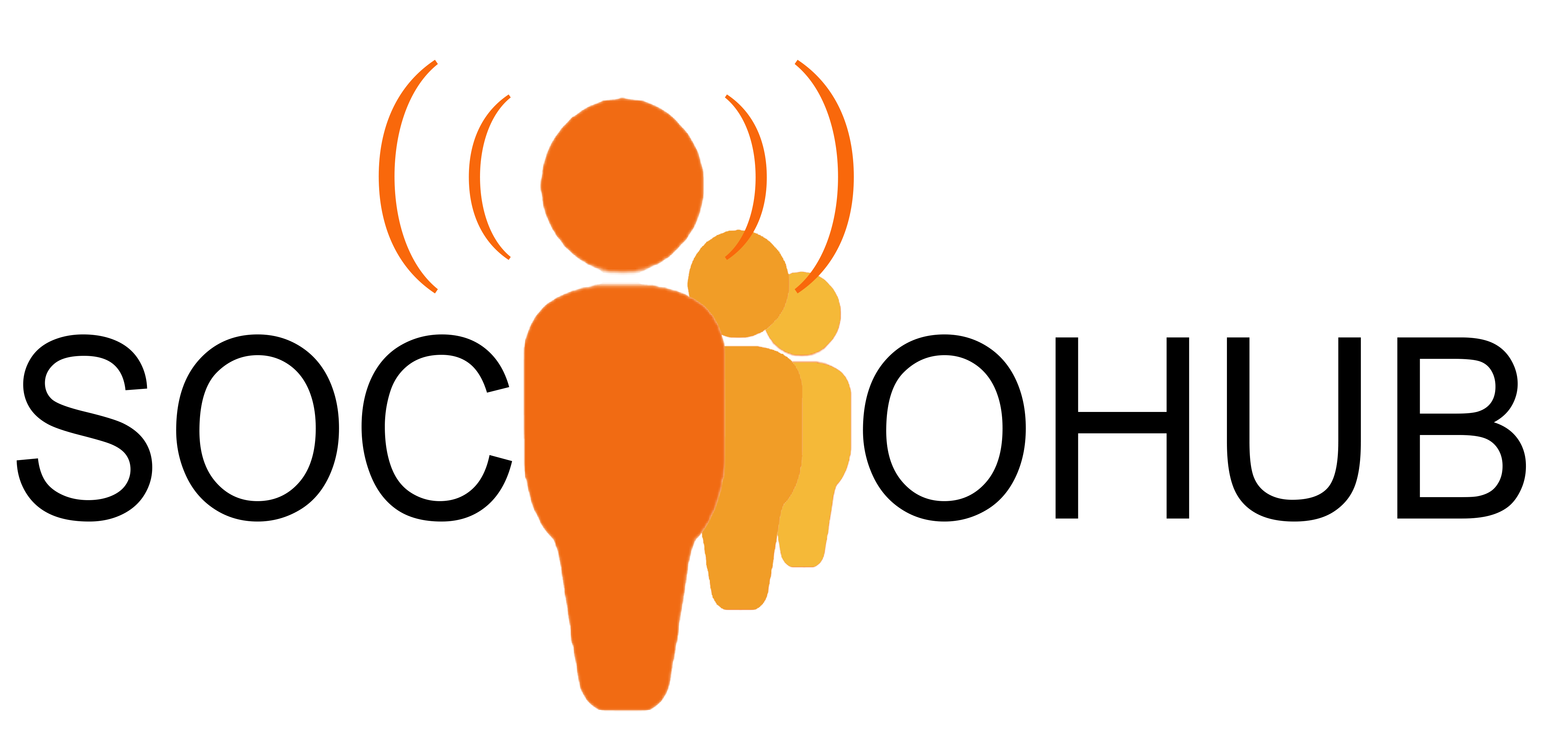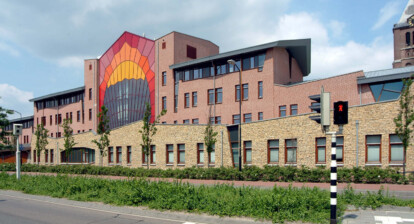Segregation in the Dutch educational system
EXECUTIVE SUMMARY
Education increasingly is a demarcating factor in Dutch society, which has consequences for, among other things, political voting and social interactions. One potential reason that this is the case, is because of the way the Dutch educational system is set up. Namely, persons with different levels of education are more and more segregated in Dutch educational institutions; there is a rise in categorical and private schools, educational tracking is severe, and parents more often choose primary schools that suit their ideology regarding child-rearing. Partially, this is a positive, since it does enhance learning for students. However, there is also less intergroup contact between people with different educational and social backgrounds, which leads to less solidarity and inequality in society. To prevent this, I recommend (1) that segregation happens between classes, and not within schools, and that the courses that do not require certain cognitive abilities are taught together, and (2) a different normative narrative on education where no distinctions between “good” and “bad” are made.
Introduction
Differences between groups in societies are of all time, but the relevance of level of education as a demarcating factor has increased in the Netherlands since the 1970s [1]. For instance, whereas at first one’s social interactions and political preferences were highly dependent on the religious or class-based pillar one belonged to, now it seems that one’s level of education is of increasing importance for determining these facets of life. To draw a general picture of this, research has shown that in the Netherlands, persons are more and more likely to choose a romantic partner with the same educational level [2]. Similarly, one’s educational level increasingly predicts whether someone is left or right wing since the 1980s [3], and in the Dutch elections of 2019 and 2021, one’s level of education is even a good indicator of which party one is most likely to vote [4]. There can be multiple reasons for this occurrence, but in this policy brief, I will focus on the influence of the structure of
Dutch educational institutions, with a special emphasis on high schools. More specifically, I will discuss how segregation [Box 1] occurs in the Dutch educational system, and which general trends can be discerned post-2000. Then, I will discuss the advantages and disadvantages of this segregation within educational institutions that are mentioned in the scientific literature, and I will go over the implications of these advantages and disadvantages.Since this segregation can potentially have detrimental effects, I will conclude this policy brief with two specific recommendations to mitigate these pernicious consequences.
*Segregation = the separation of groups of people with differing characteristics, often taken to connote a condition of inequality [5]

The Dutch case of segregation within educational systems is of particular interest, since it happens already at a relatively young age, as shown in figure 1. Pupils already get categorized in levels conform one’s educational attainment at the age of 12 or 13 years old, which is considerably lower compared to countries such as Spain, Sweden, and Denmark, where it happens at the age of 16. Additionally, despite Dutchmen having a tendency to see the Netherlands as being egalitarian [7], the emergence of private education also is occurring in the Netherlands – the number of private high schools has tripled in the last 10 years [8]. Since these private schools are costly, and therefore not affordable for the majority of the population, it is plausible that the segregation in educational institutions keeps growing. Perhaps other European countries can draw parallels with the Dutch emergence of private education
Segregation in educational institutions in the Netherlands
When considering segregation in educational institutions, two related terms are of high importance; tracking and private education. Tracking refers to the process of allocating students into homogeneous classes according to their intelligence [9]. Hence, tracking can be seen as a form of segregation, as it is explained in box 1. However, this does not necessarily mean that it is something negative: The reason why tracking is done is because it optimizes learning – when students get taught on their own level, they are most capable to develop their own capacities in the most efficient way [10]. It is deemed undesirable if all students get classes on the same level; either the less intelligent students will have a hard time catching up, or the most bright students will not develop their cognitive abilities [11]. Unfortunately, tracking also has negative consequences. Namely, the more tracked an education system is, the bigger the effect of one’s parents’s social class on one’s educational attainment. This implies that there is less equality of opportunity if educational institutions are segregated according to level. This is especially pernicious if the tracking happens at a young age – as is the case in the Netherlands [9][12].
Tracking generally takes place between classes, and not necessarily between schools. Hence, in the Netherlands, persons with a vocational education (VMBO-b) can go to the same school as someone who is doing a pre-university track (VWO), but not be in the same class. However, there is a fast increase in track-specific, or categorical high schools in the Netherlands. In 2021, only 1 in 8 HAVO and VWO-pupils attended schools where also vocational VMBO-b-tracks were provided [13]. Additionally, there is an increase in categorical VWO schools, and in these schools almost 70% of the pupils have highly-educated parents. This implies that the likelihood of these students meeting other students with a lower social economical status, is relatively low [13].
“Only 1 in 8 HAVO and VWO-pupils attended schools where also vocational VMBO-tracks were provided [13].”
These effects of tracking within educational systems reach further than this. One Dutch journalist and anthropologist recalls that at categorical VWO-schools, students also get taught that they are superior, and that they are the crème de la crème of students – something that does not happen in the more vocational oriented schools [14]. If this is indeed true, clear normative demarcations are attached to different types of schooling.
In schools that are mixed, and are thus not categorical, activities are still often limited within classes. Additionally, in Belgium, despite student councils being accessible for every student at these mixed schools, in practice, educational level is a determining factor in participation in these councils; the higher one educated one is, the more likely that one is part of a student council [15]. Therefore, even in the administrative bodies in schools, a form of segregation occurs.

In Dutch primary schools, no tracking occurs, and in principle pupils will follow the same classes. Institutionally, this implies that in primary school, pupils with different cognitive abilities and social backgrounds still meet and interact with one another. However, also when it comes to the choice of primary schools, some type of segregation takes place, namely on the basis of ethnicity and parental social background. As figure 2 and 3 show (explanation on the indexes used in the graphs in the endnotes), pupils with similar social backgrounds are still sent to different schools, which makes it harder for them to meet pupils who have a different social background. Likewise, due to a rise of Islamic primary schools, also persons with different ethnicities become more and more segregated. Although this effect is smaller than that of parental class, it is still essential to consider this. Henceforth, despite the Dutch education system not being set up to segregate pupils in primary schools, in practice, there is segregation in primary schools as well.
Lastly, parallel to the two trends mentioned before, there is a quick emergence of private schools and tutoring in the Netherlands. Between 2012 and 2022, the number of private high schools have tripled [8]. Despite these private schools not necessarily being categorical, it still causes a form of segregation; since the tuition to these schools are so high (the average tuition is €55008), they are practically not accessible for every person. Therefore, students with a high economic background are likely to flock together in these schools.
Effects of segregation within educational institutions
The effects of segregation within educational institutions are various. Here it is important to reckon that there are both effects that can directly be linked to the segregation within educational institutions, and effects that can indirectly be linked (see box 2). In this policy brief, my focus will mainly be on the direct consequences of segregation, but examples of the indirect effects are the outcomes in political preferences [2] [3], which I mentioned in the introduction, and the outcomes in labor market participation and housing, as my colleagues Mr. Windster and Mr. van Wallenburg addressed in their policy briefs.

The direct effects can largely be linked to a lack of intergroup contact; if schools are segregated, the likelihood of meeting people who have a different educational level is considerably smaller. This is especially important when bearing in mind that one of the main roles of education is to learn to interact with others to create a shared sense of society [6] [17], or, as sociologists call it, socialization. These interactions often lead to friendships; according to Dutch sociologist Volker, most friendships start in educational institutions [18]. If, then, persons with different educational levels go to different schools, the chance becomes smaller that persons will befriend others with different levels of education. Similar trends can be seen when it comes to partner choices. Research from France shows that people increasingly find their first romantic partner in an educational institution, and that these relationships also tend to last longer [19]. Whereas in 1960 in France, only 8% of females met their current partner in a context of education, in 1990, this was almost 20% – an increase of almost 150% [9]. This can of course partially be because of the increased access of education for females, but nevertheless this trend shows that couples do meet more often in educational context. In the Netherlands, similar trends are expected; also in the Netherlands, education became more accessible to females, and the latest CBS-report shows that couples that live more than 5 years together and met between 2008 and 2013 are more likely to have met in an educational context [20] – although the percentage is still relatively small compared to couples who met in a recreational or work-related context.
The division of pupils in high school also is highly normative. Firstly, the terms highly and lowly educated already indicate a certain value; the more educated persons are deemed higher than the less educated persons. Additionally, as mentioned before, the persons who follow the “higher” high school tracks are said to be taught that they are on top of society [14]. This is also an effect that continuously emerges from sociological and psychological research; higher educational attainments are correlated to higher levels of self-esteem [21] [22] – although this is potentially an indirect effect of the segregation within educational institutions, and not a direct effect.
Implications for the future
Clear trends of segregation within Dutch educational systems can be seen, which of course has implications for society at large. In the following section, I will mention what the current segregation in educational institutions means for Dutch society at large, after which I will give recommendations to mitigate the most pernicious implications.
1. Optimized learning
Categorizing students by their cognitive abilities is a way to optimize learning. By doing so, every student is best able to develop their capacities the best way. This arguably is the best way to get a competitive advantage over other countries [11], especially if the Netherlands wants to develop itself as a “knowledge economy”.
2. Schools start differentiating
Now, it already is evident that when choosing primary schools, parents have preferences for certain schools, while they avoid others. The main reason that parents do this, is because of the different types of education schools offer [16]; some schools apply more “classic” teaching methods, whereas others allow pupils to develop the skills they want themselves. Consequently, parents can better choose a school that is coherent with their ideology regarding child-rearing. To meet this demand, it is likely that schools start differentiating more. Also the quick emergence of private schools can be seen in this light. In fact, the Dutch educational inspectorate argues that the more “free” schools such as Montessori and Dalton schools cause more segregation than purely religious schools, such as Islamic or Reformed schools [16].
3. Social background matters more for educational attainment
Segregation within the educational institutions also has negative consequences. Namely, as mentioned before, in highly tracked systems, parental class plays a bigger role in explaining one’s educational attainment than in less tracked systems. Also the emergence of private schools, and tutoring causes parental class to play a big role again; only wealthier parents can provide their children with extra help to improve their academic achievements. As a result, there is less equality of opportunity in the Netherlands, which is exactly what the latest governmental reports on education show [16] [23].

4. Less social cohesion between groups of people with different levels of education Another alarming negative consequence of segregation within education is a lack of social cohesion [box 3] or solidarity in society. Research already shows that most friends, and a large portion of romantic relationships are formed in an educational context. If in these educational contexts, people with different social and educational backgrounds get in touch with one another, it is harder to form a shared value system, and misunderstanding between groups is more likely to arise. For society at large, this is pernicious, as a shared understanding of norms and values, and sympathies are generally seen as prerequisites for states to effectively govern itself in the first place.
Recommendations
Now it is evident that segregation does occur in the Dutch educational system, and that it has both positive and negative effects, I have drafted three policy recommendations to mitigate the negative consequences of segregation within the Dutch educational institution.
1. Segregation in classes, not in school
This is the most substantial policy that I propose. The sociological literature suggests that one of the main advantages of tracked education systems is that it optimizes learning; students get taught at the level that suits their cognitive abilities, which is efficient. This is indeed true, and this could continue this way. However, segregation should only occur between classes where it makes sense, and not between schools. In this way, subjects where cognitive abilities play little to no role, such as physical education, social studies, and cultural studies, can be taught together. In this way, pupils with different educational backgrounds still get in contact with one another. Furthermore, tutoring can happen between classes. For instance, vocationally oriented pupils can assist theoretically oriented pupils doing craftwork, while theoretically oriented pupils can help vocationally oriented pupils doing courses such as math.

2. Different narrative on education
As mentioned before, the segregation within educational institutions can lead to less solidarity between different groups in society due to less intergroup contact. This is especially pernicious if a value judgement is attached to differences between groups; groups are not only seen as being different, but one group is also seen as being better than the other. Unfortunately, this is the case in the narrative on education; persons who fulfilled a theoretical track (e.g. VWO, or later university) is called “highly” educated, whereas persons who followed a more practical track (e.g. VMBO, or later, MBO) are “lowly” educated. This also returns in the names of the respective tracks: HAVO literally means “higher general high education”, while VMBO stands for “Pre-secondary vocational education”. Instead of using the normative terms of “higher” and
“lower” educated, governmental institutions can start employing the more descriptive terms “theoretical” and “practical” education, so they become more common in society at large. Because of this, the segregation within educational institutions – which, as mentioned before, partially has positive effects – will not necessarily lead to different value judgement between groups.
Endnote: How to interpret figure 2 and 3
The index used in the graphs is on a scale of 0 to 100, where 100 means full segregation, and 0 means that the schools mirror society at large descriptively. Imagine 50% of the children of a given country having theoretically educated parents, and 50% of the children having practically parents, then it is expected that at all schools, 50% of students are of practically educated parents and 50% of theoretically educated parents as well. In practice, however, this is often different. The differences between the real division, and the expected division are summed up to get the dissimilarity index.
Referenties
1. Bovens, M. (2012). Opleiding als scheidslijn. Van oude en nieuwe maatschappelijke breukvlakken (oratie). Rotterdam: Erasmus Universiteit.
2. Latten, J. (2005). Zwanger van segregatie: Culturele dimensies van demografische ontwikkelingen in Nederland. Amsterdam: Amsterdam University Press.
3. Kriesi, H., Grande, E., Lachat, R., Dolezal, M., Bornschier, S., & Frey, T. (2008). West European politics in the Age of Globalization. Cambridge: Cambridge University Press. doi:10.1017/CBO9780511790720
4. Krouwel, A. (2022, June 17). The Dutch 2021 elections: Education as the new divide? The Progressive Post. https://progressivepost.eu/the-dutch-2021-elections-education-as-the-new- divide/
5. Browne, J. (2022, September 5). Segregation. Encyclopedia Britannica https://www.britannica.com/topic/segregation-sociology
6. Pekkarinen, T. (2018). School tracking and intergenerational social mobility. IZA World of Labor. doi: 10.15185/izawol.56.v2
7. Mijs, J. J. B., Daenekindt, S., De Koster, W., & Van Der Waal, J. (2022). Belief in meritocracy reexamined: Scrutinizing the role of subjective social mobility. Social Psychology Quarterly, 85(2), 131–141. https://doi.org/10.1177/01902725211063818
8. Sander en de kloof: De groeiende kloof in het onderwijs. (2021.). VPRO.https://www.vpro.nl/programmas/sander-en-de- kloof/ongelijk-onderwijs.html
9. Van de Werfhorst, H. G. (2019). Early tracking and social inequality in educational attainment: Educational reforms in 21 European countries. American Journal of Education, 126(1), 65-99.
10. Van de Werfhorst, H. G. (2014). Changing societies and four tasks of schooling: Challenges for strongly differentiated educational systems. International Review of Education, 60, 123-144.
11. Wooldridge, A. (2021). The Aristocracy of talent: How meritocracy made the modern world. Skyhorse.
12. Bol, T., & Van de Werfhorst, H. G. (2013). Educational systems and the trade-off between labor market allocation and equality of educational opportunity. Comparative Education Review, 57(2), 285-308.
13. SCP. (2021). Samen of gescheiden naar school. https://www.scp.nl/publicaties/publicaties/2021/02/04/samen-of-gescheiden-naar-school
14. Luyendijk, J. (2022). De zeven vinkjes: Hoe mannen zoals ik de baas spelen. Uitgeverij Pluim
15. De Groof, S., Elchardus, M., & Stevens, F. (2001). Leerlingenparticipatie in het secundair onderwijs tussen theorie en praktijk. Technisch verslag: beschrijving van de schalen. Vrije Universiteit Brussel, Vakgroep Sociologie, Onderzoeksgroep TOR.
16. Onderwijsinspectie (2018). Staat van onderwijs 2018. ttps://www.onderwijsinspectie.nl/documenten/rapporten/2018/04/11/rapport-de-staat-van-het-onderwijs
17. Rorty, R. (1999). Education as socialization and as individualization. Philosophy and social hope, 114-126.
18. Van Tubergen, F., & Volker, B. (2015). Inequality in access to social capital in the Netherlands. Sociology, 49(3), 521-538.
19. Bouchet-Valat, M. & Grobon, S. (2019). Homogames un jour, homogames toujours? Rencontre pendant les études et proximité de diplôme et de carrière au sein des couples en France. Population, 74, 131-154. https://doi.org/10.3917/popu.1901.0131
20. Centraal Bureau voor de Statistiek. (2014, July 18). Steeds vaker relatie via internet. https://www.cbs.nl/nl-nl/nieuws/2014/25/steeds-vaker-relatie-via-internet#:~:text=Nog%20steeds%20hebben%20de%20meeste,hobby)%20of%20via%20de%20kerk.
21. Ferkany, M. (2008). The educational importance of self-esteem. Journal of Philosophy of Education, 42(1), 119-132.
22. Baumeister, R. F., Campbell, J. D., Krueger, J. I., & Vohs, K. D. (2003). Does high self-esteem cause better performance, interpersonal success, happiness, or healthier lifestyles? Psychological Science in the Public Interest, 4(1), 1–44. https://doiorg.tilburguniversity.idm.oclc.org/10.1111/1529-1006.01431
23. Bussemaker, J. (2021). Ministerie van Verbeelding. Idealen en de politieke praktijk. Uitgeverij Balans.







